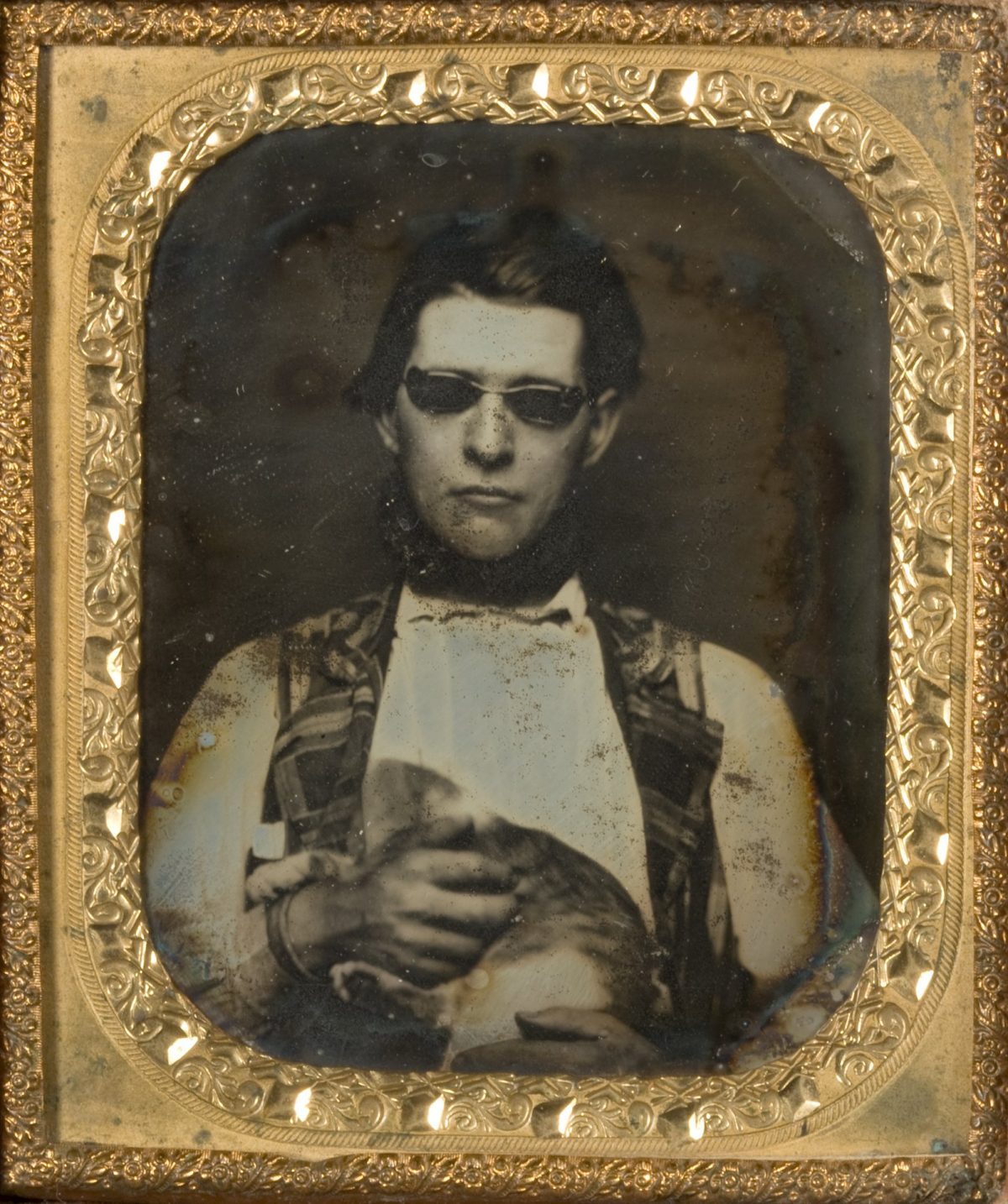“Everything has its wonders, even darkness and silence, and I learn, whatever state I may be in, therein to be content.”
– Helen Keller
In this Flashbak we look of daguerreotypes of blind people from the mid-19th century.
The daguerreotype was the first commercially successful photographic process (1839-1860) in the history of photography. Named after its French inventor, Louis Jacques Mandé Daguerre (18 November 1787 – 10 July 1851), each daguerreotype is a unique, detailed image on a silvered copper plate. Owing to their fragility, many daguerreotypes are kept in protective cases, like the folding cases we can see here.
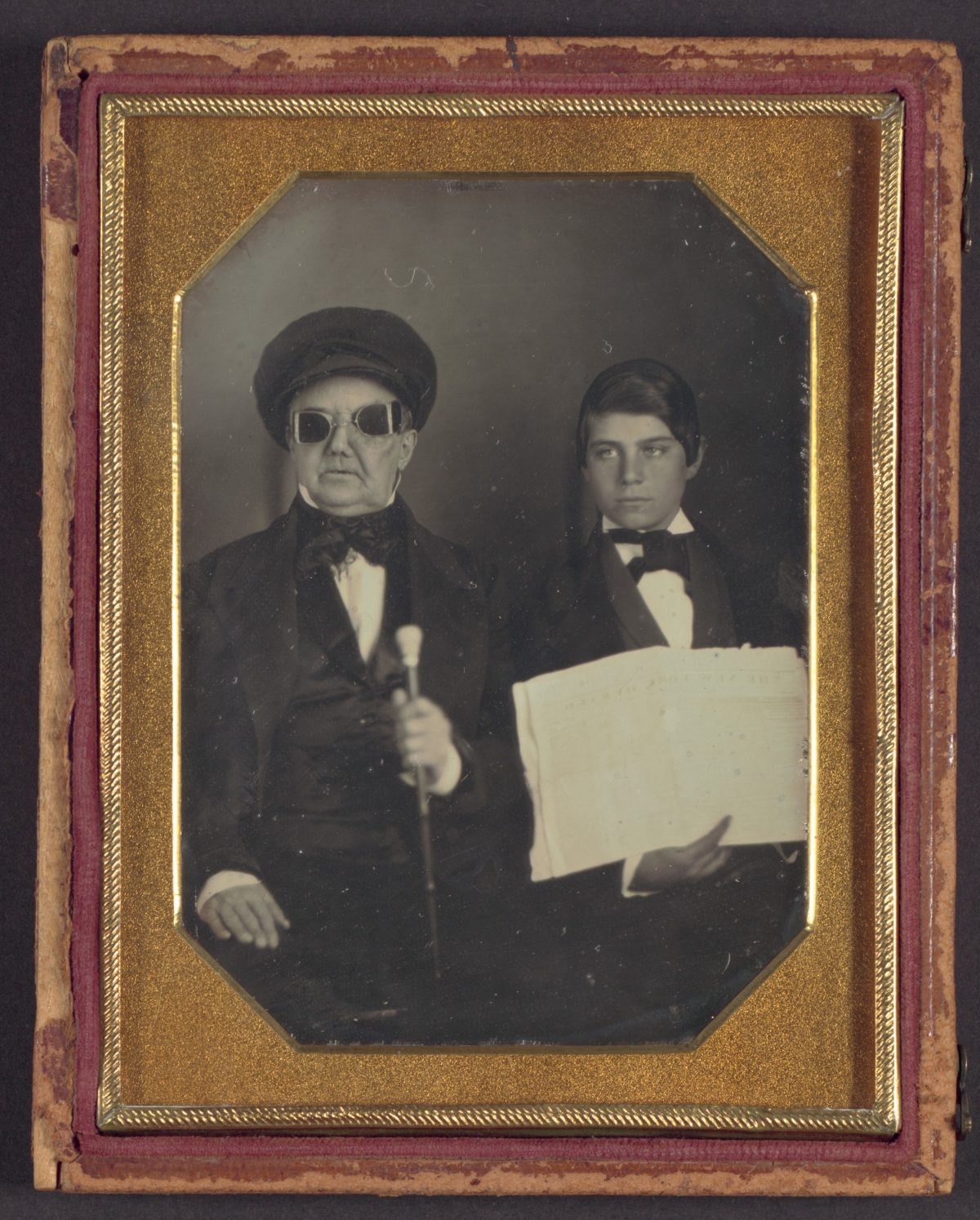
Little is known about the above portrait. The young man holds a copy of the New York Herald. Launched in 1835, the Hearld enjoyed the largest circulation of any daily in the United States. Is the man showing us the paper’s article on Moon Type, Dr. W. Moon’s system of 1847 of raised type that allowed the blind to read with their fingers?
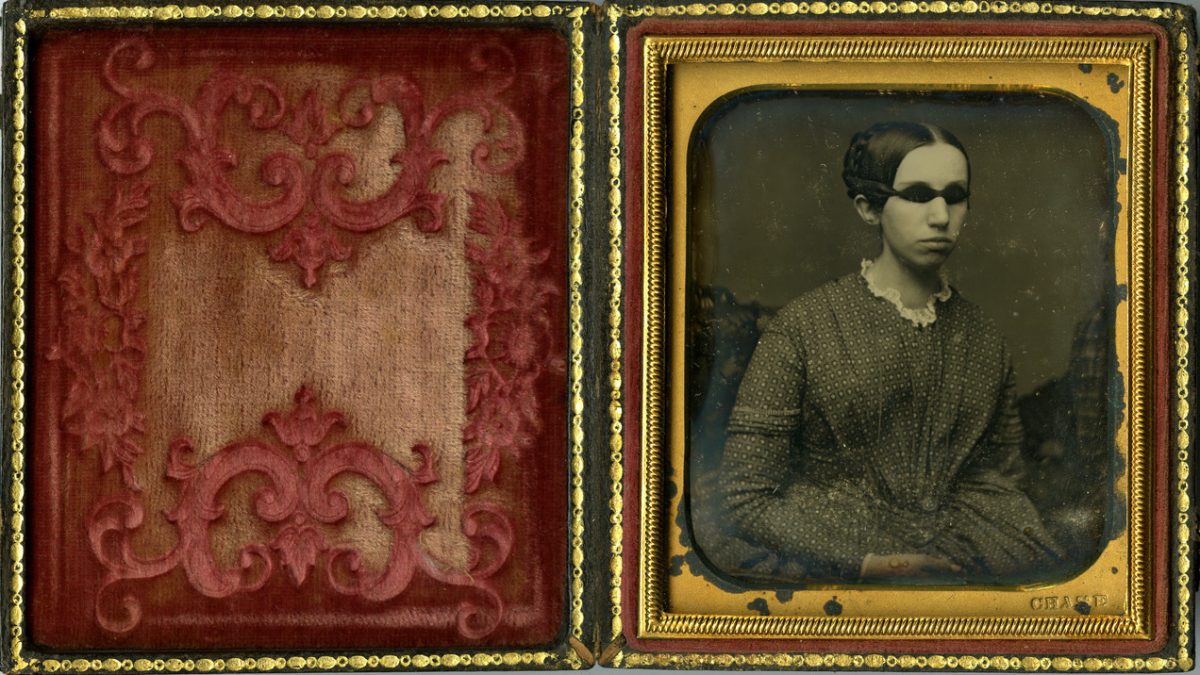
Daguerreotype of Laura Bridgman, circa 1845
Above is a portrait of Laura Bridgman (December 21, 1829 – May 24, 1889). The young woman wears a patterned dress with lace collar in 1845. Her hair is braided and pinned up with a part down the middle. The daguerreotype photograph is housed in a small leather case with a patterned red velvet lining surrounded by a gold mat board and embossing. The picture was taken at the Perkins School for the Blind, as was the one below, in which Bridgman sits alongside Sarah Wight.
Based in in Watertown, Massachusetts, The Perkins School was founded in 1829 and is the oldest school for the blind in the United States.
Bridgman is notable as the first deaf-blind American child to gain a significant education in the English language, 50 years before the more famous Helen Keller. Left deaf and blind (and with no sense of taste) at the age of two after contracting scarlet fever, Bridgman learned to read and communicate using Braille and the manual alphabet developed by Charles-Michel de l’Épée.
She became a celebrity when the writer Charles Dickens met her during his 1842 American tour and wrote about her accomplishments in his American Notes.
On Saturdays, when the school was open to the public, visitors would gather to watch Laura read and point out locations on a map with raised letters.
Her fame was short-lived, however, and she spent the remainder of her life in relative obscurity, most of it at the Perkins Institute, where she passed her time sewing and reading books in Braille.
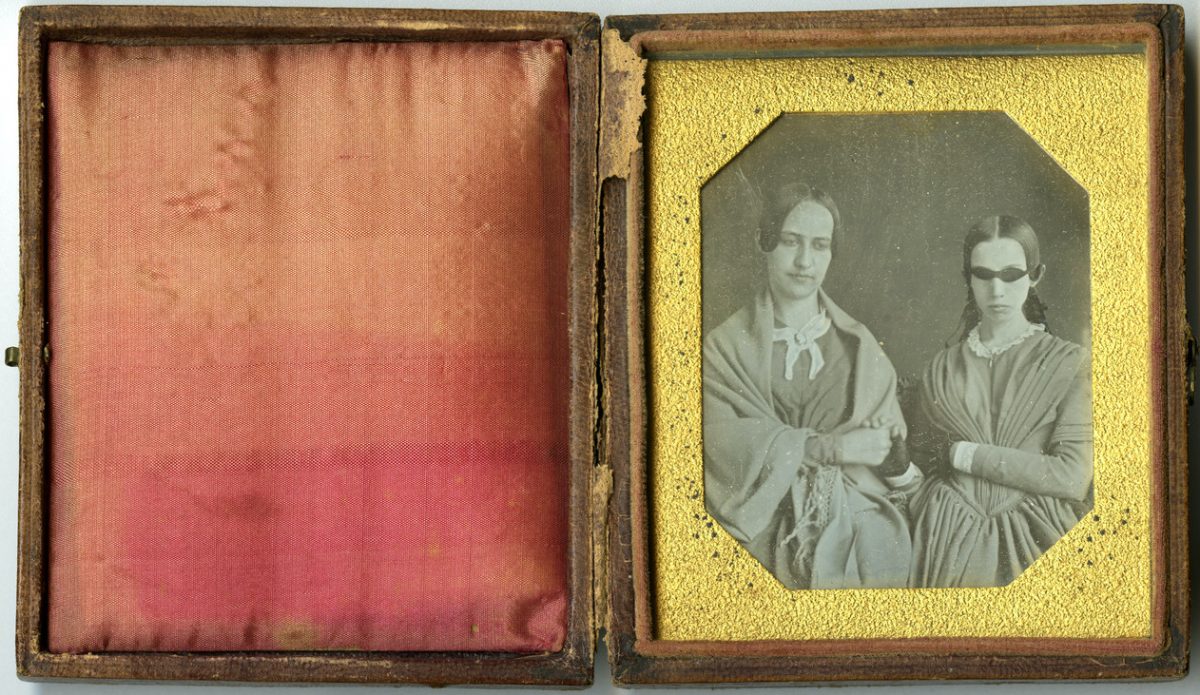
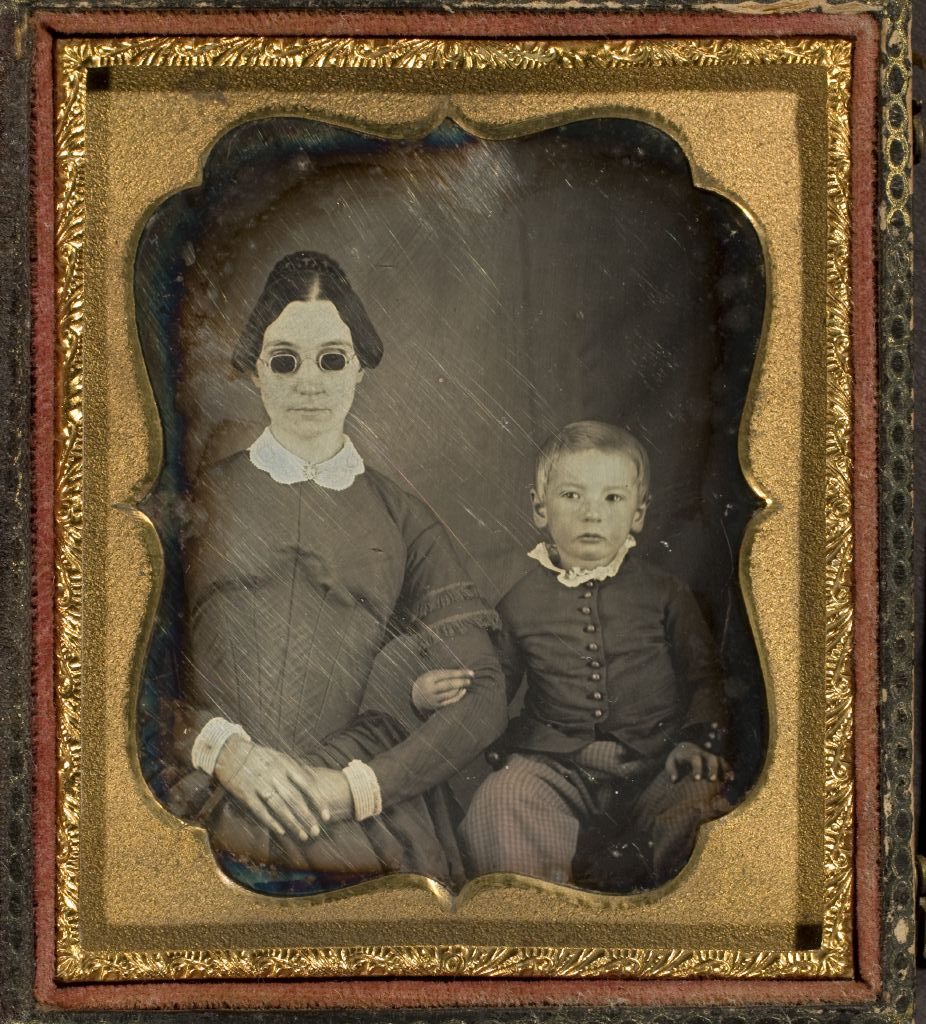
Portrait of blind woman (wearing dark glasses) and child

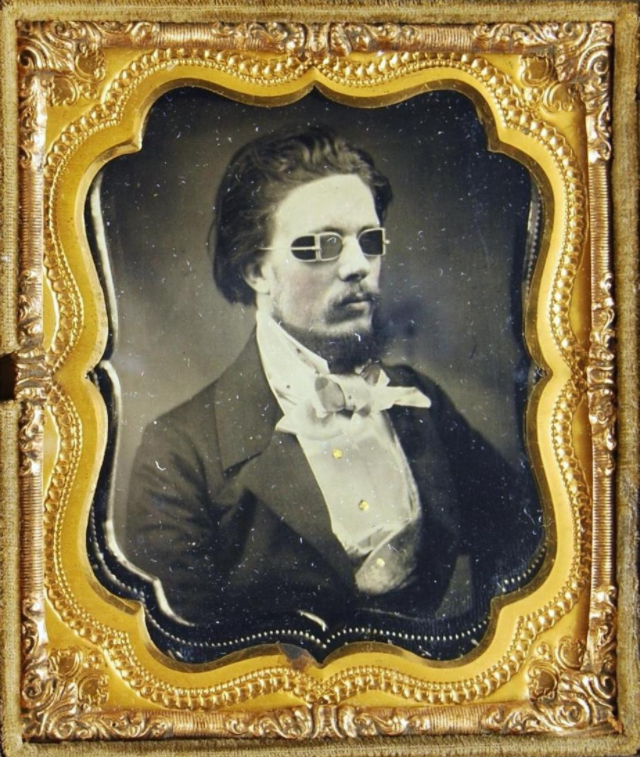
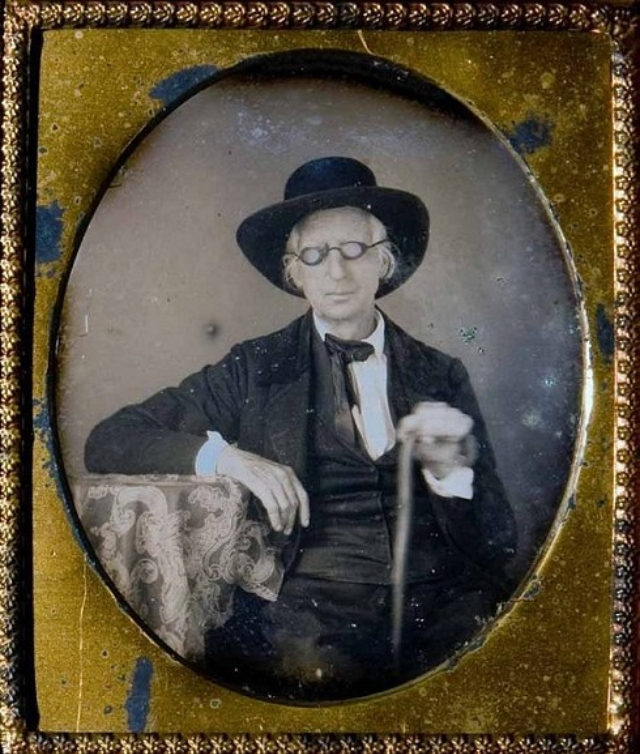
We’ll end with this 1837 portrait of Nathaniel Olds by Jeptha Homer Wade (American, 1811-1890). It’s at the Cleveland Gallery of Art. And you can buy a print of it in the Flashbak shop. Why is it here? Because of the glasses.
The green-tinted spectacles worn by Olds were designed to protect the eyes from the intensity of Argand lamps, a type of indoor light used during the early 1800s. These lamps burned whale oil, and many people worried that its bright flames might damage eyesight.
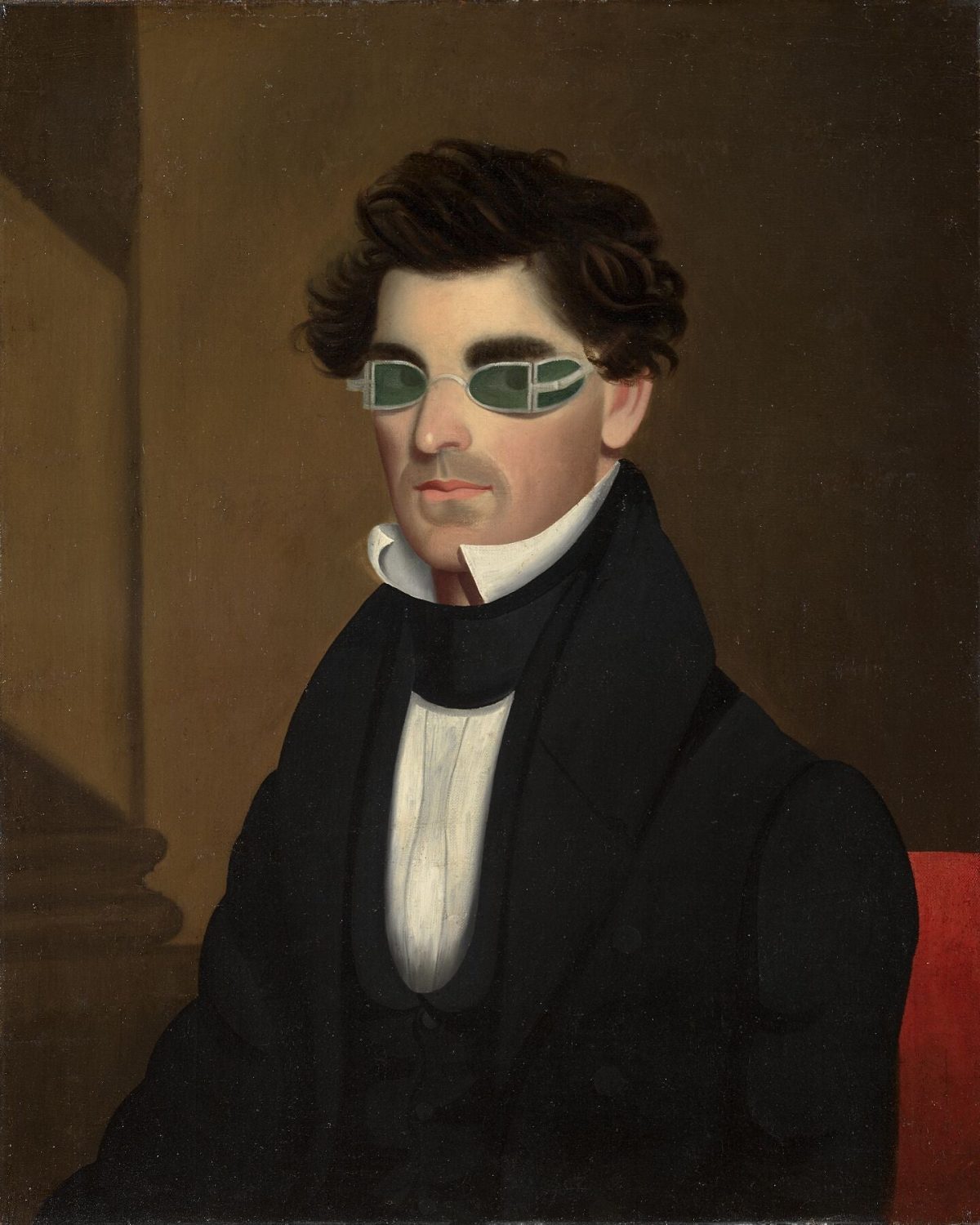
Would you like to support Flashbak?
Please consider making a donation to our site. We don't want to rely on ads to bring you the best of visual culture. You can also support us by signing up to our Mailing List. And you can also follow us on Facebook, Instagram and Twitter. For great art and culture delivered to your door, visit our shop.
